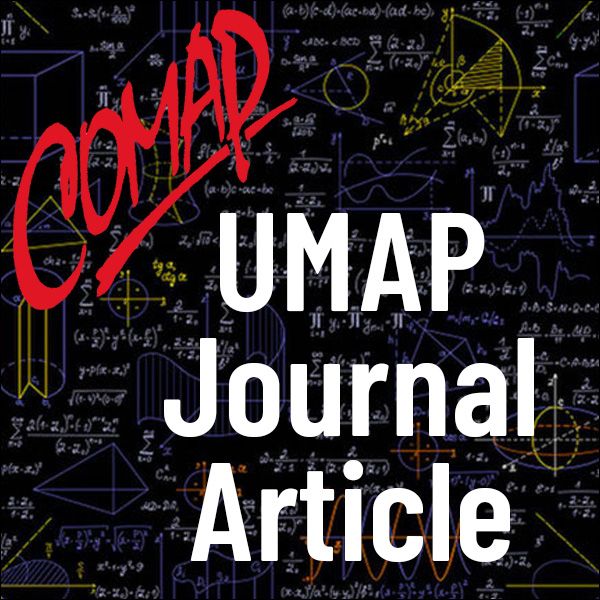The Pythagorean Theorem of Baseball and Alternative Models (UMAP)
Author: Michael A. Jones, Linda A. Tappin
The "Pythagorean Theorem of Baseball" uses a simple function of a team's runs scored and runs allowed to predict the team's winning percentage. Runs scored reflects a team's offensive ability, while runs allowed reflects defensive and pitching ability. Values from the formula are posted daily during the Major League Baseball (MLB) season on websites such as ESPN.com [Neyer 2004]. Baseball managers and fans use the statistic to see if their team is playing up to its predicted value ("its potential") [Schwarz 2004]. The "Theorem" has also been suggested as a criterion to evaluate the success of baseball managers themselves [Horowitz, 1994], spawning a debate on its appropriateness [Ruggiero et al. 1997; Horowitz 1997]. We use calculus to explore the mathematical characteristics of a class of predictive functions of which the Pythagorean Theorem of Baseball is a special case. We restrict our attention to models that predict the season-ending winning percentage as a function of runs scored and runs allowed over the course of a season. We use linear regression on the data at the ends of the 1969-2004 seasons to investigate the accuracy of the Pythagorean Theorem and other Pythagorean type models that predict winning percentage based on the ratio of runs allowed to runs scored, as well as models based on a linear combination of runs scored and runs allowed. Although we considered beginning our analysis in 1973, the year when the designated-hitter rule went into effect, we selected 1969, the year when the pitcher's mound was lowered 5 inches. We also offer suggestions on how to extend the analyses for other sports and for other baseball questions.
Table of Contents:
INTRODUCTION
THE PYTHAGOREAN CLASS OF MODELS TO PREDICT WINNING PERCENTAGES
PYTHAGOREAN MODEL FOR THE 2004 SEASON
PYTHAGOREAN MODEL FOR 1969-2004
CLASSES OF LINEAR MODELS
IDEAS FOR FURTHER EXPLORATION
ACKNOWLEDGMENTS
REFERENCES
ABOUT THE AUTHORS

Mathematics Topics:
Application Areas:
You must have a Full Membership to download this resource.
If you're already a member, login here.